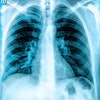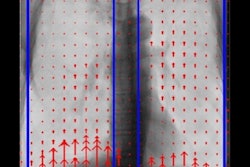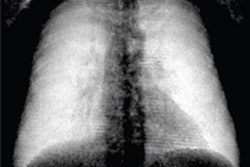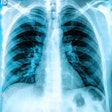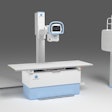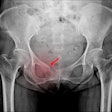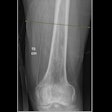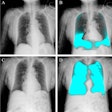An open-source AI model for analyzing chest x-rays can identify individuals at risk of death from chronic obstructive pulmonary disease (COPD), according to a study published October 30 in Radiology: Cardiothoracic Imaging.
The finding is from an experiment that included 4,226 patients with mild to severe disease and suggests that the tool could complement standard clinical tests for guiding treatment, the authors noted.
“This study demonstrates that CXR-Lung-Risk is a valuable open-source AI tool for predicting respiratory mortality among patients with COPD,” wrote lead author Jong Hyuk Lee, MD, PhD, of Seoul National University Hospital in Korea, and colleagues, including a team at Harvard University in Boston who developed the model.
CXR-Lung-Risk was developed in 2023 and has previously been shown to identify individuals at risk of death from lung cancer on chest x-rays. The model was recently released in an open-source format to facilitate its use in clinical practice, yet its ability to predict mortality risk for patients with specific respiratory diseases such as COPD has not previously been established, the group wrote.
To bridge the gap, the researchers specifically assessed whether it has added prognostic value beyond pulmonary function tests and other clinical risk factors, such as the Global Initiative for Chronic Obstructive Lung Disease (GOLD) grading system.
The researchers culled x-rays from 4,226 patients (average age, 70) diagnosed with COPD at their hospital between January 2011 and December 2015. Based on the x-rays, the patients were classified into four categories based on the GOLD grading system: grade 1 (forced expiratory volume in 1 second [FEV1] > 80%), grade 2 (FEV1 of 50% to 79%), grade 3 (FEV1 of 30% to 49%), and grade 4 (FEV1 < 30%). During a median follow-up of 6.7 years, 831 (19.7%) had died from respiratory-related causes.
According to the results, after adjusting for lung function and clinical risk factors, CXR-Lung-Risk scores derived from the x-rays were a prognostic factor for respiratory mortality. Every five-year increase in CXR-Lung-Risk scores was associated with a 16% higher risk of respiratory mortality, the researchers reported.
 RSNA
RSNA
“Our results demonstrate that deep learning can be used to extract relevant prognostic information from easily obtainable chest radiographs in patients with COPD,” the researchers wrote.
Importantly, the authors noted that originally, the CXR-Lung-Risk model was created to predict the risk of respiratory disease mortality in the general population. This study fulfilled several key criteria for external testing, including distinct differences in ethnicity (Asian versus white), geographic location (South Korea vs. the U.S.), and chronological period (2010s vs. 1990s), in contrast with the original model, they wrote.
“The CXR-Lung-Risk model can potentially complement GOLD grading using chest radiographs,” the researchers concluded.
The full study is available here.


